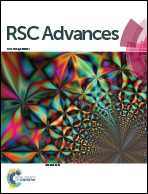Enzymatic transesterification for biodiesel production: a comprehensive review
Abstract
Biodiesel is a type of renewable fuel and a potential alternative for continuously consumed fossil resources. Currently, the method applied for biodiesel production is transesterification which is divided into non-catalyzed reaction, chemical-catalyzed reaction and enzymatic reaction. Enzymatic reaction is more advantageous than the other methods because of its mild reaction conditions, easy product recovery, no wastewater generation, no saponification and higher quality of products. The main component in this reaction is an enzyme called lipase which can catalyze wide variety of substrate including free fatty acids. Two other main raw materials for biodiesel synthesis are oil and acyl acceptor such as alcohol. Biodiesel catalyzed by enzyme is affected by many factors such as lipase specificity, lipase immobilization, oil composition and purity, oil to acyl acceptor molar ratio, acyl acceptors, temperature, and water content. Many methods have been tested to manipulate these factors and improve the enzymatic reaction for biodiesel production. These methods include combination of lipases, enzyme pretreatment, enzyme post treatment, methanol addition technique, use of solvent and silica gel, and reactor design. This paper will critically discuss the three major components of enzymatic production of biodiesel and the methods used to improve enzymatic reaction, as well as a review on its economic evaluation and industrial scale production.

- This article is part of the themed collection: Biofuels and biomass for a clean environment

 Please wait while we load your content...
Please wait while we load your content...